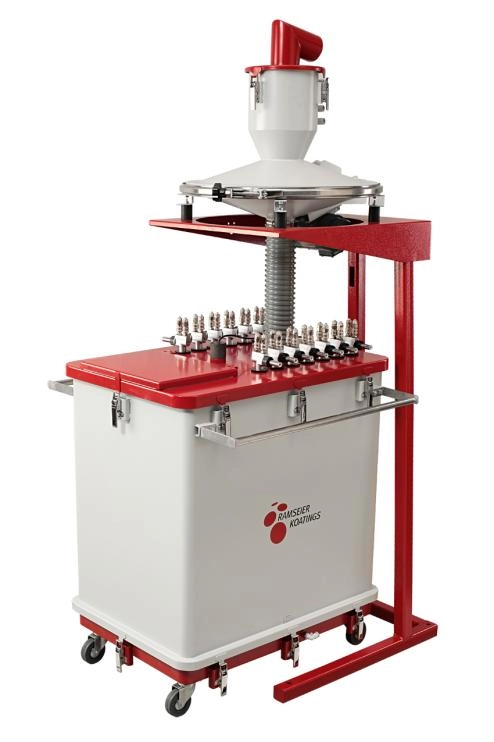Content Menu
● Understanding Powder Sieves
>> What is a Powder Sieve?
>> Importance of Upgrading Your Powder Sieve
● Types of Upgrades for Powder Sieves
>> 1. Mesh Upgrades
>>> Selecting the Right Mesh Size
>>> Mesh Material
>> 2. Ultrasonic Deblinding Systems
>> 3. Screen Deck Lifting Systems
>> 4. Vibration and Motion Control
>> 5. Automation and Control Systems
● Benefits of Upgrading Your Powder Sieve
>> Enhanced Efficiency
>> Improved Product Quality
>> Cost Savings
>> Compliance with Industry Standards
● Steps to Upgrade Your Powder Sieve
>> Step 1: Assess Your Current Equipment
>> Step 2: Research Upgrade Options
>> Step 3: Plan the Upgrade
>> Step 4: Implement the Upgrade
>> Step 5: Monitor Performance
● Common Questions About Powder Sieve Upgrades
>> 1. How often should I upgrade my powder sieve?
>> 2. What are the signs that my powder sieve needs an upgrade?
>> 3. Can I upgrade my existing sieve, or do I need to purchase a new one?
>> 4. What is the cost of upgrading a powder sieve?
>> 5. How can I ensure compliance with industry standards after upgrading?
● Conclusion
Upgrading your powder sieve can significantly enhance its performance, leading to improved efficiency, better product quality, and reduced operational costs. This article will guide you through the various aspects of upgrading your powder sieve, including the types of upgrades available, the benefits of each, and practical steps to implement these upgrades effectively.

Understanding Powder Sieves
What is a Powder Sieve?
A powder sieve is a device used to separate particles of different sizes in powdered materials. It is essential in various industries, including pharmaceuticals, food processing, and chemicals, where the quality and consistency of the product are paramount. The sieve works by allowing smaller particles to pass through while retaining larger ones, ensuring uniformity in the final product.
Importance of Upgrading Your Powder Sieve
Over time, the performance of a powder sieve can diminish due to wear and tear, changes in product specifications, or advancements in technology. Upgrading your sieve can help maintain its efficiency and adapt to new processing requirements.
Types of Upgrades for Powder Sieves
1. Mesh Upgrades
Selecting the Right Mesh Size
The mesh size is crucial for effective sieving. Upgrading to a finer mesh can improve the separation of smaller particles, while a coarser mesh may be necessary for larger particles. Consider the particle size distribution of your materials when selecting a mesh size.
Mesh Material
The material of the mesh can also impact performance. Stainless steel is commonly used due to its durability and resistance to corrosion. However, specialized materials may be required for specific applications, such as food-grade or chemical-resistant meshes.
2. Ultrasonic Deblinding Systems
Ultrasonic systems can be added to existing sieves to prevent mesh blinding, a common issue when processing fine powders. These systems use high-frequency vibrations to keep the mesh clear, allowing for continuous operation and increased throughput.
3. Screen Deck Lifting Systems
Implementing a screen deck lifting system can facilitate easier access for cleaning and maintenance. This upgrade not only improves hygiene but also extends the lifespan of the sieve by reducing wear during maintenance activities.
4. Vibration and Motion Control
Upgrading the vibration mechanism of your sieve can enhance its efficiency. Advanced vibratory systems can provide more consistent and controlled motion, improving the separation process and reducing the risk of product degradation.
5. Automation and Control Systems
Integrating automation into your sieving process can significantly enhance performance. Automated systems can monitor and adjust parameters in real-time, ensuring optimal operation and reducing the need for manual intervention.
Benefits of Upgrading Your Powder Sieve
Enhanced Efficiency
Upgrading your powder sieve can lead to higher throughput and reduced processing times. Improved mesh technology and vibration control can enhance the separation process, allowing for faster production cycles.
Improved Product Quality
With better separation and reduced contamination risks, upgraded sieves can produce higher quality products. This is particularly important in industries where product purity is critical, such as pharmaceuticals and food processing.
Cost Savings
While there may be an initial investment in upgrading your sieve, the long-term savings can be substantial. Increased efficiency and reduced downtime can lead to lower operational costs and higher profit margins.
Compliance with Industry Standards
Upgrading your equipment can help ensure compliance with industry regulations and standards. This is especially important in sectors like food and pharmaceuticals, where strict guidelines govern product quality and safety.
Steps to Upgrade Your Powder Sieve
Step 1: Assess Your Current Equipment
Before making any upgrades, evaluate your current sieve's performance. Identify any issues such as reduced throughput, frequent mesh blinding, or maintenance challenges. This assessment will help you determine the most effective upgrades.
Step 2: Research Upgrade Options
Explore the various upgrade options available for your specific sieve model. Consult with manufacturers or industry experts to understand the best solutions for your needs.
Step 3: Plan the Upgrade
Develop a detailed plan for the upgrade process. This should include timelines, budget considerations, and any necessary downtime for installation. Ensure that all stakeholders are informed and prepared for the changes.
Step 4: Implement the Upgrade
Carry out the upgrade according to your plan. Ensure that all new components are installed correctly and that any necessary training is provided to operators.
Step 5: Monitor Performance
After the upgrade, closely monitor the performance of your sieve. Collect data on throughput, product quality, and maintenance needs to assess the effectiveness of the upgrades.

Common Questions About Powder Sieve Upgrades
1. How often should I upgrade my powder sieve?
The frequency of upgrades depends on usage, wear and tear, and advancements in technology. Regular assessments can help determine when an upgrade is necessary.
2. What are the signs that my powder sieve needs an upgrade?
Common signs include reduced throughput, frequent mesh blinding, and increased maintenance requirements. If you notice these issues, it may be time to consider an upgrade.
3. Can I upgrade my existing sieve, or do I need to purchase a new one?
Many upgrades can be retrofitted to existing sieves, such as mesh changes and ultrasonic systems. However, in some cases, a new sieve may be more cost-effective in the long run.
4. What is the cost of upgrading a powder sieve?
The cost varies widely depending on the type of upgrades and the specific equipment. It's essential to evaluate the potential return on investment when considering upgrades.
5. How can I ensure compliance with industry standards after upgrading?
Consult with industry experts and ensure that all new components meet relevant regulations. Regular audits and quality checks can help maintain compliance.
Conclusion
Upgrading your powder sieve is a strategic investment that can lead to enhanced performance, improved product quality, and significant cost savings. By understanding the various upgrade options and implementing them effectively, you can ensure that your sieving process remains efficient and compliant with industry standards.
Hot Tags: China, Global, OEM, private label, manufacturers, factory, suppliers, manufacturing company










































 .
. 